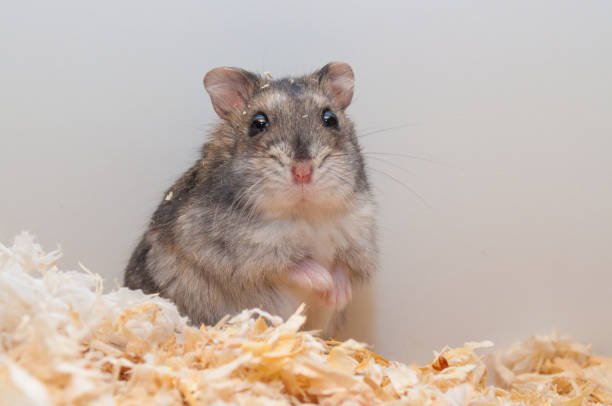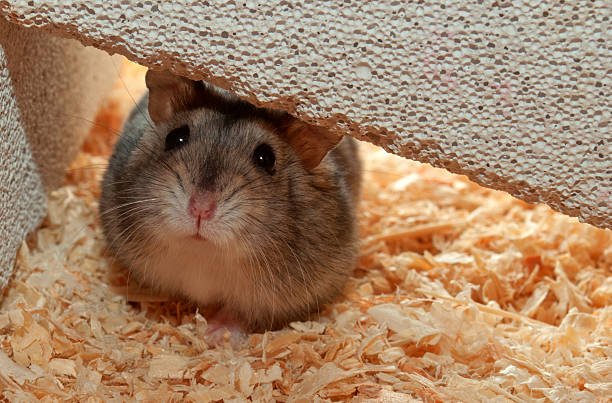Designing Hamster Habitats: Go Natural and Safe for a Happy, Healthy Pet
This post contains affiliate links. This means I will make a commission at no extra cost to you should you click through and make a purchase. Read the full disclosure here.In a world of plastic tubes and neon cages, it’s easy to forget that hamsters are burrowers, foragers, and explorers by nature—not cartoon characters trapped in bright plastic tunnels.
As cozy pet mamas living in small homes or apartments, many of us want our pet’s space to reflect the calm, soft, and natural vibe of our living space. A habitat that blends in, feels intentional, and more importantly, is safe and species-appropriate.
In this post, we’ll explore how to design a natural, enriching, and safe hamster habitat—one that respects your hamster’s instincts, your limited space, and your love for minimalist, nature-inspired living.
Let’s build a home your little friend can thrive in.
Why Go Natural?
Hamsters may live in our homes, but their needs are shaped by the wild.
In nature, hamsters:
- Burrow underground to sleep and feel safe
- Forage for food
- Chew constantly to keep their teeth healthy
- Run for miles each night
So a natural habitat doesn’t just look good—it helps your hamster:
- Stay physically active
- Reduce stress
- Avoid illness and injury
- Display natural behaviors
Natural = nurturing. It’s a design choice and a care strategy.
Step 1: Choose a Natural-Friendly Enclosure
A good habitat starts with the right container. Avoid cages with bright colors, multiple stories, or tight tubes. Instead, look for:
Ideal enclosures:
- Niteangel Vista Enclosure (clear panels + deep base)
- Prevue 528 Cage (affordable + large floor space)
- DIY IKEA Detolf (glass display cabinet hack)
- Glass aquariums (minimum 40 gallons)
Avoid:
- Tiny pet store cages
- Wire-bottom cages (hurt hamster feet)
- Tall, multi-level setups (risk of falling)
Your goal: wide, flat, breathable, and escape-proof.
Step 2: Layer in Natural Bedding
Your hamster’s bedding isn’t just flooring—it’s their underground world.
Best bedding options:
- Paper-based (Carefresh, Kaytee Clean & Cozy)
- Aspen shavings (no scent, safe for burrowing)
- Hemp bedding (great for dust-sensitive households)
- Add hay or dried moss on top for texture
Depth matters: 6–10 inches minimum for real digging. Mix textures to allow tunnel-holding layers!
Step 3: Add Enrichment—The Natural Way

Let’s skip the plastic hideouts and neon chew toys. Here’s how to keep your hamster stimulated in a nature-inspired way:
Enrichment ideas:
- Wooden tunnels and bridges (check they’re untreated!)
- Cork logs (climb, chew, hide)
- Ceramic or coconut hideouts
- Sand bath in a shallow dish or bowl
- Cardboard boxes, toilet roll tubes (endless creativity!)
- Foraging zones: scatter food or hide it in paper shreds
Imagine building a tiny forest floor or desert cave—cozy, simple, and enriching.
Step 4: Choose Safe, Functional Accessories
Natural doesn’t mean boring—it means harm-free, instinct-honoring design.
Wheel:
- Must be solid-surface, not mesh
- Minimum 8″ for dwarfs, 10–12” for Syrians
- Wood, silent spinner, or muted tones = aesthetic win
Food & water:
- Use ceramic bowls for stability
- Or try scatter feeding (more natural + reduces boredom)
- Water bottle or open dish? Both work, just keep clean
Chews:
- Applewood sticks
- Unpainted popsicle sticks
- Grass mats
- Willow balls
Less plastic, more purpose.
Step 5: Design for Calm and Beauty
Even if your hamster doesn’t care about color palettes—you do. Let’s make this setup look lovely in your home.
Design tips:
- Stick to earth tones: browns, creams, sage green, soft grey
- Use a wood base or platform to elevate the cage and protect surfaces
- Add miniature signs with your hamster’s name
- Use baskets or bins nearby to hold food, bedding, and supplies
Make your hamster’s habitat part of your space, not an eyesore in the corner.
Bonus: Natural Hamster Habitat Checklist
- Before you’re done, make sure you have:
- 450–600+ sq in enclosure
- 6–10″ bedding depth
- At least 1 wooden or ceramic hideout
- Solid-surface wheel
- Sand bath
- Chew toys
- Natural textures: moss, hay, cork, or grass
- Calm space with no direct sun or loud sounds
You can even print this as a poster for your pet corner.

Favorite Natural Items on Amazon
| Item | Why It’s Great |
|---|---|
| Niteangel Hideouts | Untreated wood, stylish shapes |
| Kaytee Clean & Cozy Bedding | Soft, dust-free, safe |
| Hamiledyi Wooden Tunnel | Crawl space + chew toy |
| Zoo Med Reptile Sand Dish | Perfect natural sand bath container |
| Niteangel Silent Wooden Wheel | Quiet, pretty, large enough |
All are safe, natural-feeling, and blend into cozy home décor.
Final Thoughts
Designing a hamster habitat isn’t just a checklist—it’s a love letter to your pet’s wellbeing. A natural, safe, and enriching home gives your hamster the space to explore, dig, hide, play, and just be a hamster.
And in return, you get a happy, healthy little companion who fits right into your quiet, intentional lifestyle.
From the deep bedding to the wooden hideout tucked in a cozy corner, every element says:
“You’re safe here. You’re home.”













